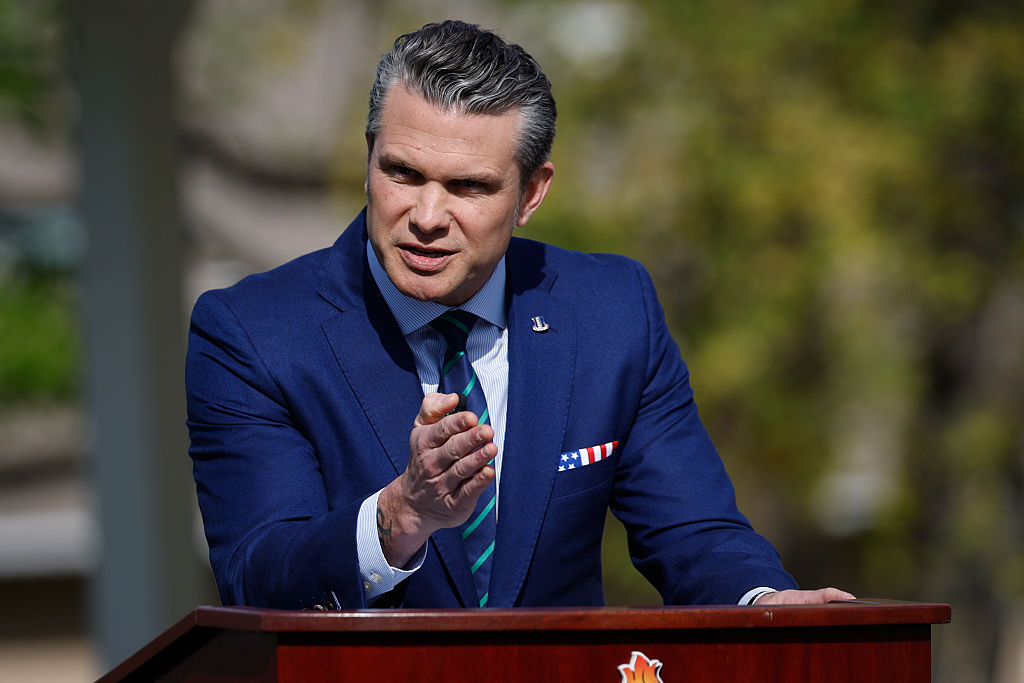U.S. Defence Secretary Pete Hegseth on Thursday said he was unaware of any intelligence suggesting Iran had moved any of its highly enriched uranium to shield it from U.S. strikes, amid continuing questions about the state of Iran’s nuclear program.
U.S. military bombers carried out strikes against three Iranian nuclear facilities early Sunday local time using more than a dozen 30,000-pound bunker-buster bombs.
The results of the strikes are being closely watched to see how far they may have set back Iran’s nuclear program, after President Donald Trump said it had been obliterated.
“I’m not aware of any intelligence that I’ve reviewed that says things were not where they were supposed to be, moved or otherwise,” Hegseth told an often fiery news conference.
Trump, who watched Hegseth’s exchange with reporters, echoed his defense secretary, saying it would have taken too long to remove anything.
“The cars and small trucks at the site were those of concrete workers trying to cover up the top of the shafts. Nothing was taken out of (the) facility,” Trump wrote on his social media platform, without providing evidence.
Several experts have cautioned that Iran likely moved a stockpile of near weapons-grade highly enriched uranium out of the deeply buried Fordow site before the strikes, and could be hiding it in unknown locations.
They noted satellite imagery from Maxar Technologies showing “unusual activity” at Fordow on Thursday and Friday, with a long line of vehicles waiting outside an entrance to the facility. A senior Iranian source told Reuters on Sunday most of the 60% highly enriched uranium had been moved to an undisclosed location before the attack.
WHEREABOUTS OF URANIUM
The Financial Times, citing European intelligence assessments, reported that Iran’s highly enriched uranium stockpile remains largely intact since it was not concentrated at Fordow.
Hegseth’s comments denying such claims came at the news briefing where he also accused journalists of downplaying the success of the strikes following a leaked preliminary assessment from the Defense Intelligence Agency suggesting they may have only set back Iran by months.
He said the assessment was low confidence, and, citing comments from CIA Director John Ratcliffe, had been overtaken by intelligence showing Iran’s nuclear program was severely damaged and would take years to rebuild.
U.S. senators briefed later on Thursday by Ratcliffe, Hegseth, Secretary of State Marco Rubio and General Dan Caine, chairman of the Joint Chiefs of Staff, said it was clear the strikes had damaged Iran’s nuclear facilities, though it would take time to assess by how much.
“I will say it was not part of the mission to destroy all their enriched uranium or to seize it or anything else,” Republican Intelligence Committee Chairman Tom Cotton of Arkansas told reporters after the classified briefing, adding that he was confident the mission was “extraordinary.”
Senator Mark Warner of Virginia, the top Intelligence Committee Democrat, said the only way to be certain about Iran’s nuclear capabilities was to have inspectors on the ground.
“It was clear, and again, this is long before this brief, that some of the enriched uranium was never going to be taken out by a bunker-buster bomb, so some of that obviously remains,” Warner said.
Tulsi Gabbard, who normally would conduct such briefings as director of national intelligence, did not participate. Trump said last week that she was wrong in suggesting there was no evidence Iran was building a nuclear weapon.
The four officials were due to brief the House of Representatives on Friday.
Senators are expected to vote this week on a resolution that would require congressional approval for strikes against Iran, which is not expected to be enacted.
At the Pentagon news conference, Hegseth described the strikes as “historically successful.” His comments came after Iranian Supreme Leader Ayatollah Ali Khamenei said Iran would respond to any future U.S. attack by striking American military bases in the Middle East.
Khamenei claimed victory after 12 days of war, and promised Iran would not surrender despite Trump’s calls.
MEDIA ‘HATRED’
During the news conference, Hegseth criticized the media, without evidence, for having an anti-Trump bias.
“It’s in your DNA and in your blood to cheer against Trump because you want him not to be successful so bad,” Hegseth said.
“There are so many aspects of what our brave men and women did that … because of the hatred of this press corps, are undermined,” he said.
Trump praised Hegseth’s news conference as: “One of the greatest, most professional, and most ‘confirming’ News Conferences I have ever seen!”
On X, Hegseth thanked Trump for his praise.
During the press conference, Caine, the top U.S. general, largely stuck to technical details, showing a video testing the bombs on a bunker like the ones struck on Sunday.
Caine declined to provide his own assessment of the strike, deferring to the intelligence community. He denied being under pressure to present a more optimistic view of the U.S. strikes and said he would not change his assessment due to politics.
Uniformed military officials are supposed to remain apolitical.
“I’ve never been pressured by the president or the secretary to do anything other than tell them exactly what I’m thinking, and that’s exactly what I’ve done,” Caine said.
(Reuters)










